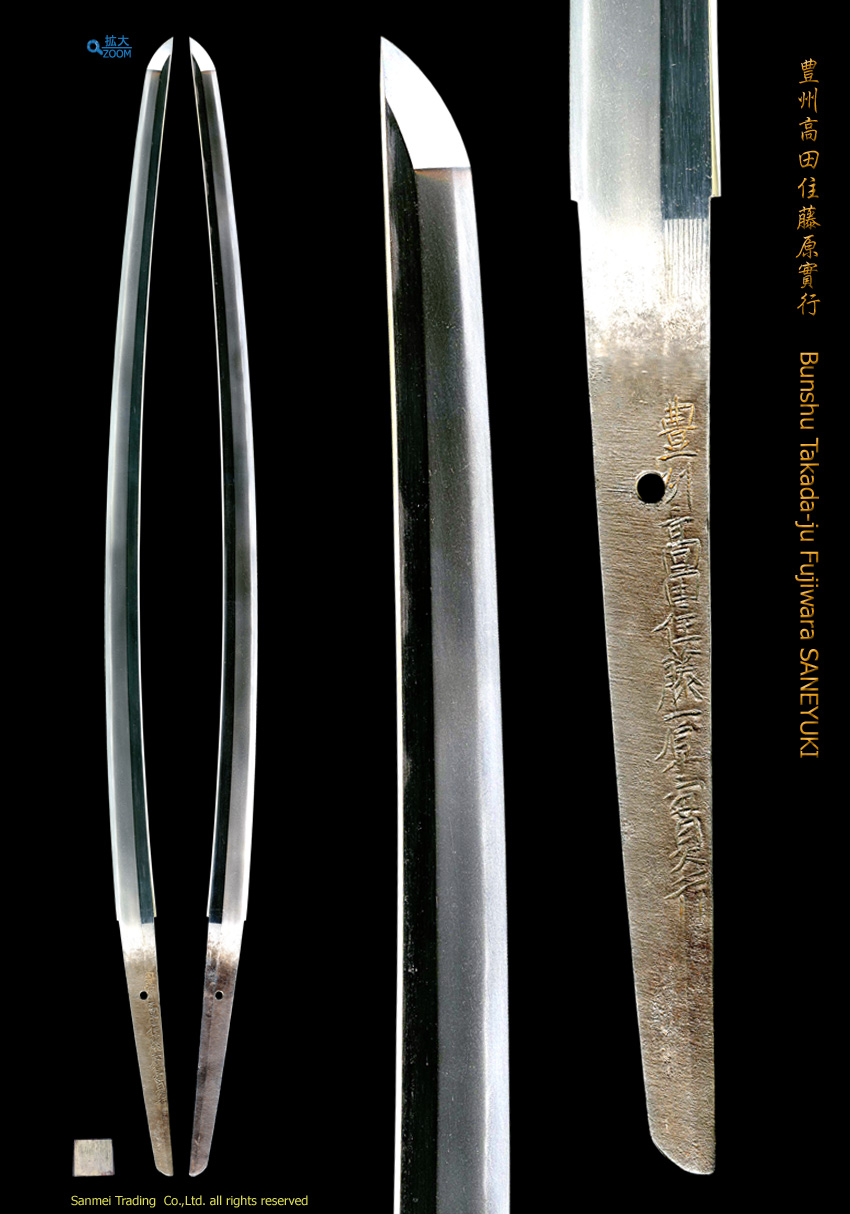Length of cutting edge 71.8cm Curvature 1.8cm Width of base 32.5mm Width of Yokote 18.7mm Thickness of base 7.6mm
Forging(Hada) : Jigane steel is finely-kneaded Itame to form Ko-Itame-hada appears on Hiraji side and Straight Masame indication appears on Shinogi-ji surface. Sparkling martensite crystals Ji-nie appears against fine Ko-Itame to generate precise gleaming lines of Chikei over the Hiraji surface.
Temper(Hamon) : Hamon is a bit on stronger side martensite crystals Nie-based, Suguha with an indication of undulating Notare with irregular activities of YOU or HOTSURE. Boundary line glows with martensite crystals of Nie and deep in the Nioi mist-like crystalline area.
Tang(Nakago) : UBU in original. Yasurime is slanting left Katte-sagari. Back ridge of Nakago is flat with Ō-sujikai filemark. The heel shape is Uneven U-shape of Iriyama-gata. One peg hole of mekugi-ana. The signature inscription in front is located a bit upper along Shinogi-ji area, starts with the place of work Bunshu Takada-ju 豊州高田住, a name of clan Fujiwara 藤原 and the name of smith SANEYUKI 実行.
The founder of Takada lineage in Kenmu (1330's) in Bungo domain was TOMOYUKI 友行 who was a disciple of SAMONJI 左文字 in Chikuzen domain. During the Sengoku Warning States period, The sword makers of Takada 高田 school had worked for a feudal lord Ōtomo Sōrin exclusively. It's workmanship covers wide range such as Soushu, Bizen, Mino or Yamashiro schools.
The founder SANEYUKI 実行, reportedly a son of TOMOYUKI 友行, appeared in Ouan era (1368-), the Nanbokucho period then had traced his descent in 6 generation in Muromachi period during Koto period unti 1600s. Even reached to Shinto age in Edo period, the lineage of SANEYUKI 実行 had prospered until end of Edo until kansei era (-1800) in generations under the patronage of Hosokawa 細川 clan.
The subject blade is distinguished as a work of the SANEYUKI 実行 during Meireki era (1655) in Shinto period. It is understood the technical exchanges between Tadayoshi school in great vogue became very active during 17 th C. and this Katana shows close resembles to the work of Hizen school in Yamashiro tradition.
The entire blade is massively heavy on both hands holding brave shape for a Samurai of warlike spirit. Using fine steel with an elaborate forging process generates fine skin of Ko- Itamehada and temper line shows delicate boundary activities and uniform whitish Nioi in the interior. Careful work of Nakago tang and it's filemarks and typical example of inscription that preserves an excellent taste of patina in 370 years.
This katana shows his superior ability to prove a representative work of Takada school in Shinto period.
Copper ground, silver plated Habaki collar, preserved in a new plain wood mounting Shira-saya.
reference data :
Honma Kunzan/Ishii Masakuni, Nihonto Meikan, Yuzankaku, 1975


